Table of Contents
A practical guide to sentiment analysis tools for business
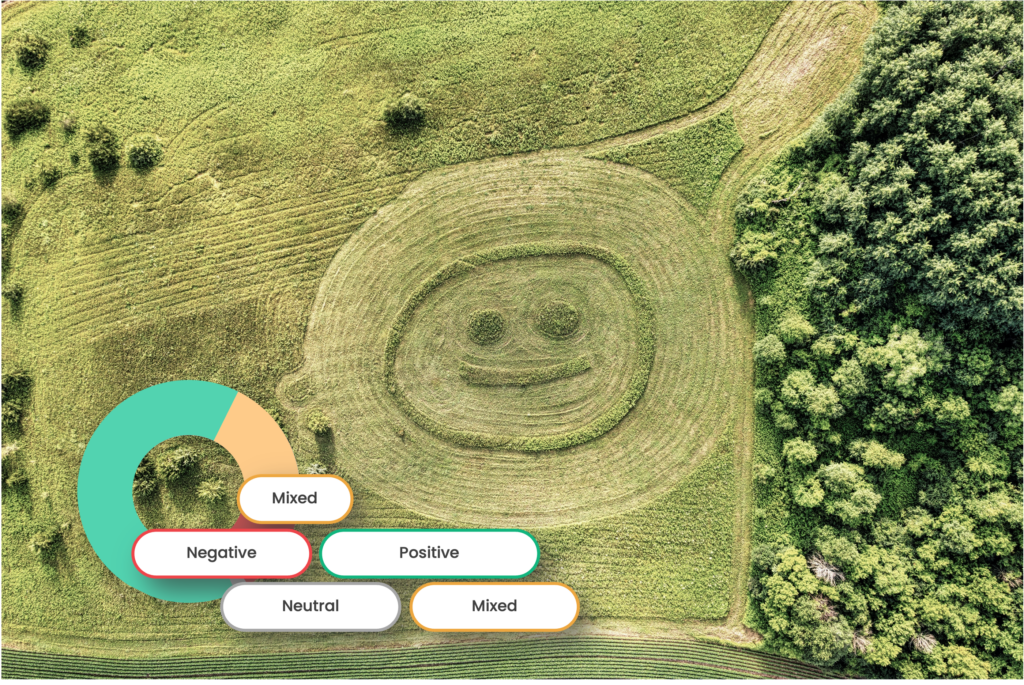
As humans, we have a lot of feelings. About our lives, our relationships, the things we buy, what we eat, and even our employers. For businesses, there’s significant value in being able to understand— and influence— the way people feel. And that’s where powerful AI and sentiment analysis tools come in.
Enabling you to quickly analyse the emotional state behind customer and employee feedback, sentiment analysis can help you to understand how people feel about your brand, product, or service. In this article, we’ll explore some of the key benefits of using sentiment analysis software and give you 6 practical tips for putting it to use.
What is sentiment analysis?
Sentiment analysis is the process of using natural language processing (NLP) and machine learning techniques to identify and extract subjective information from text data. Put simply, it’s AI that can read the things people write and sort it into a ‘Positive’, ‘Negative’, or ‘Neutral’ category for you. And the greatest thing about all of this is that it works quickly, giving you insights into thousands of written responses in the click of a button.
Traditionally, businesses would manually read through feedback data and try to identify patterns or themes that emerged from the comments. However, with sentiment analysis, you can automate this process and gain a deeper understanding of customer and employee sentiment at scale. This branch of Text Analysis can help companies to identify areas of improvement, assess the effectiveness of their products and services, and make data-driven decisions that improve overall customer and employee satisfaction.
Learn more about text analysis software: Download our quick start guide.
The business applications of sentiment analysis
Improve the customer experience
One of the most common applications of sentiment analysis is customer feedback analysis. It involves analysing customer comments, reviews, and even social media posts to identify how customers feel about a product or service. By analysing this feedback, you can gain valuable insights into their preferences, pain points, and areas for improvement. This information can then be used to improve customer service, marketing strategies, and product design.
Empower customer teams to act quickly
Businesses value how quickly sentiment analysis makes it to act on customer feedback. This is because customers want their problems to be dealt with swiftly. In fact, 89% of US adults said they want companies to be proactive when it comes to providing customer service contact. With sentiment analysis software, you can instantly see which customer comments are expressing negative sentiment and deal with them urgently. This means there’s less of a delay between a customer letting you know that they’re unhappy and you doing something about it. And that’s great news, considering 83% of consumers feel higher levels of loyalty to brands that respond to and sort out their complaints.
Create better experiences for employees
Of course, businesses can also use sentiment analysis with employee feedback. You can use it to identify how employees feel about a multitude of factors, such as their tasks, colleagues, leadership, and work environment. This information can then be used to improve retention, productivity, and overall performance across the organisation.
Develop better products and services
Businesses can also use sentiment analysis for product development. By analysing customer feedback, you can gain insights into what customers like or dislike about your products, what features they would like to see in the future, and what improvements need to be made. This information can be used to improve product design, features, and functionality.
Understand the context behind quantitative metrics and scores
Sentiment analysis can help businesses understand the context of customer and employee feedback by identifying the specific issues or topics that are driving positive or negative sentiment. This is essential for gaining a deeper understanding of the reasons behind the sentiment and being able to take appropriate action.
For example, if a customer gives a low NPS score and leaves negative written feedback in the same survey, you can use sentiment analysis to identify the specific pain points that need to be addressed to make improvements.
Practical ways to use sentiment analysis
1. The first step: Ask the right questions
The first step to getting the most out of sentiment analysis is asking good open-ended questions. A key point is that you want to avoid asking questions that already have a positive or negative bias. E.g. ‘What was the best part of your experience?’. If answered correctly, all the responses to this will be positive, so sentiment analysis won’t be required. You can skip straight to keyword extraction or topic grouping if that’s the case.
On the other hand, let’s take a question like: ‘How was your latest experience with us?’. This is a good question for sentiment analysis. That’s because respondents are free to write about every aspect of their experience and sentiment analysis gets to do its job sorting the answers for you. This kind of question is also great because it means you can limit the number of questions you have to ask (e.g. What was the best part of your experience? ???? What didn’t you like about your experience? ????).
Get more open-ended question tips and examples here.
2. Identify the overall sentiment landscape
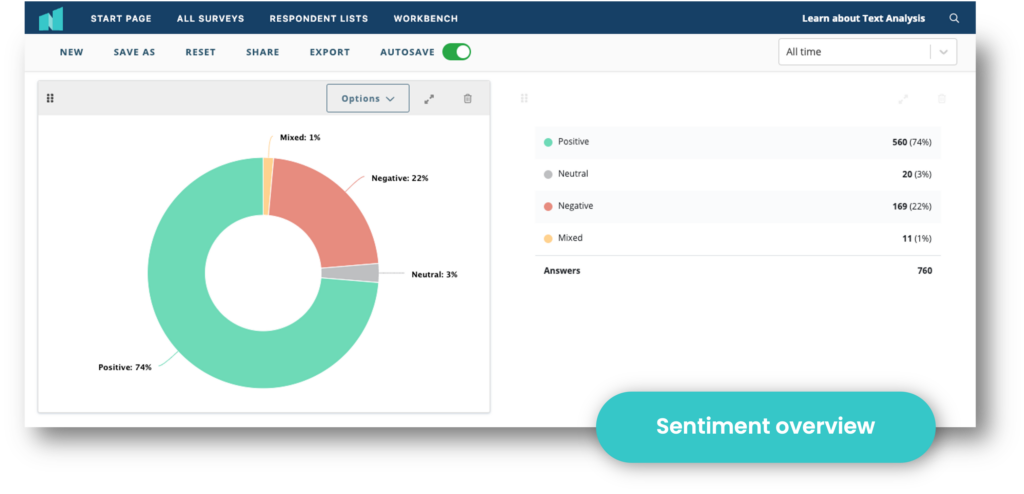
Once feedback starts coming in, you can get a quick overview of the kind of sentiment being expressed in the open-text responses to your survey. Is there a higher percentage of positive sentiment versus negative? Does the overview meet your expectations? What are your initial thoughts about this summary? How does it compare to previous results and what might the reasons be behind significant changes?
3. Read and sort comments by sentiment label
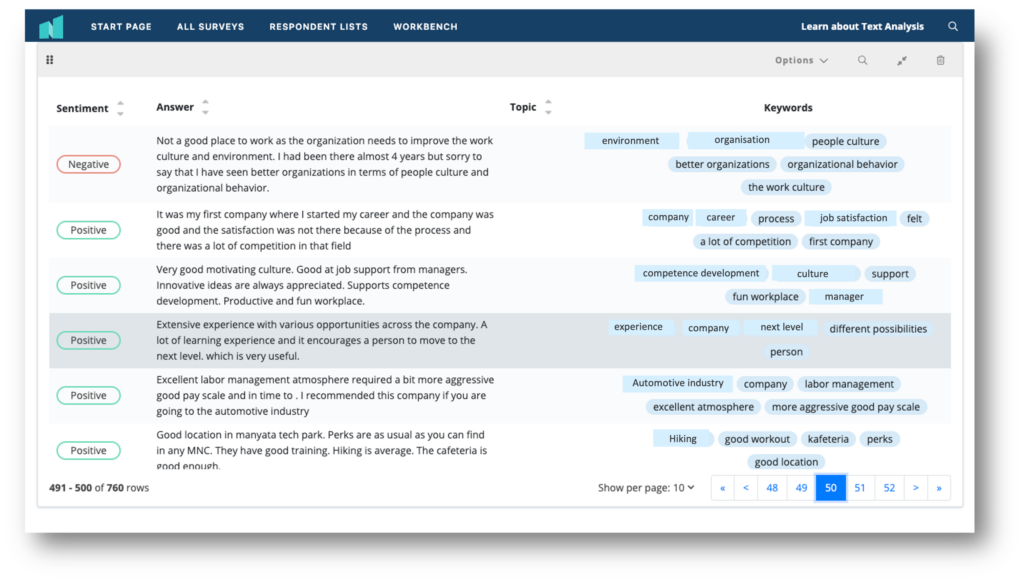
After you’ve got a general overview of the sentiment being expressed in response to your survey, you can start digging deeper. In the Netigate platform, you’re presented with all of the text answers and their corresponding sentiment label. You can also see the keywords that the Text Analysis tool has extracted from each response. With all of this information, you can start to develop a clearer understanding of the detailed thoughts and opinions behind the sentiment labels. You can then use these to start putting together a data-driven plan of action.
4. Evaluate how sentiment is spread across different groups
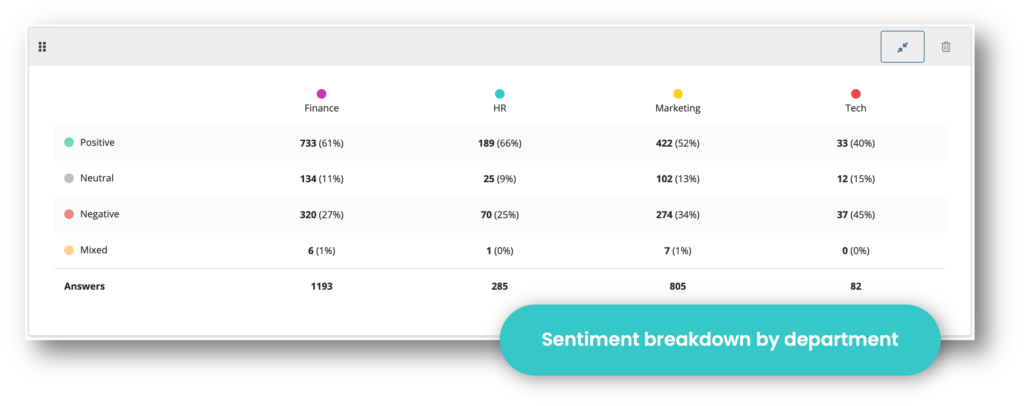
Good sentiment analysis software gives you the option to apply breakdowns and filters. This means that you can quickly gain insights into how different groups of people feel about you and your business. For example, after conducting an employee survey with Netigate you can apply breakdowns that help you to understand how sentiment may differ by department, age group, region, and other factors.
5. Sentiment by keyword
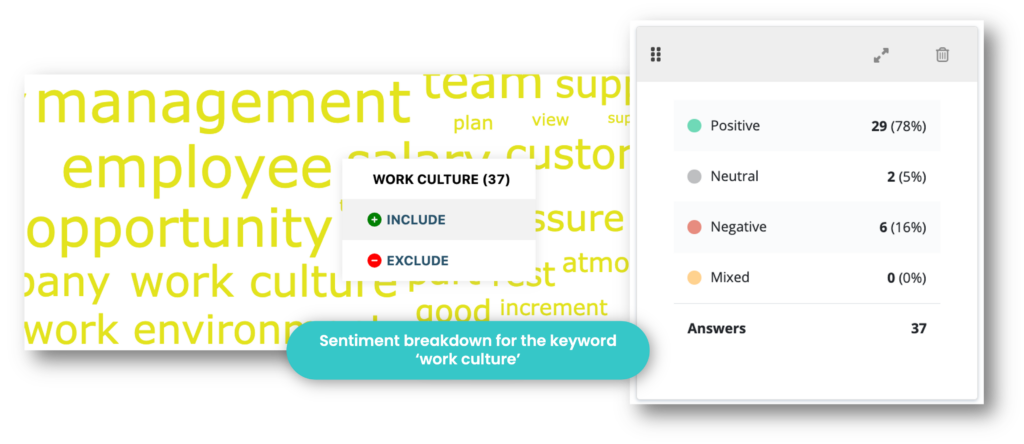
As well as filtering by specific groups, you can also view sentiment as it relates to particular keywords. When used together, sentiment analysis and keyword extraction can provide a more comprehensive understanding of textual data. By identifying the most important or recurring keywords and phrases and analysing their sentiment, you can quickly understand which topics are most strongly associated with positive or negative sentiment. This can be helpful in deciding where to focus your attention first.
You can then take this even further by applying additional breakdowns and filters. For example, you can begin by looking at the sentiment breakdown for all answers including the keyword ‘work culture’. To gain deeper insights, you can then break those results down by department, region, or any other group or background data element in your survey.
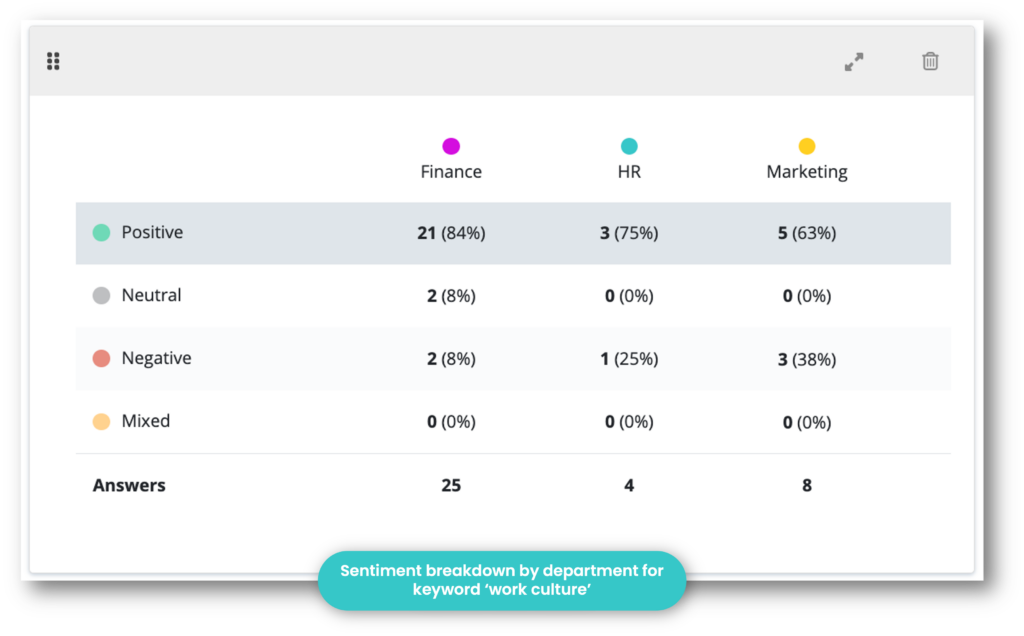
6. Sentiment by topic or theme
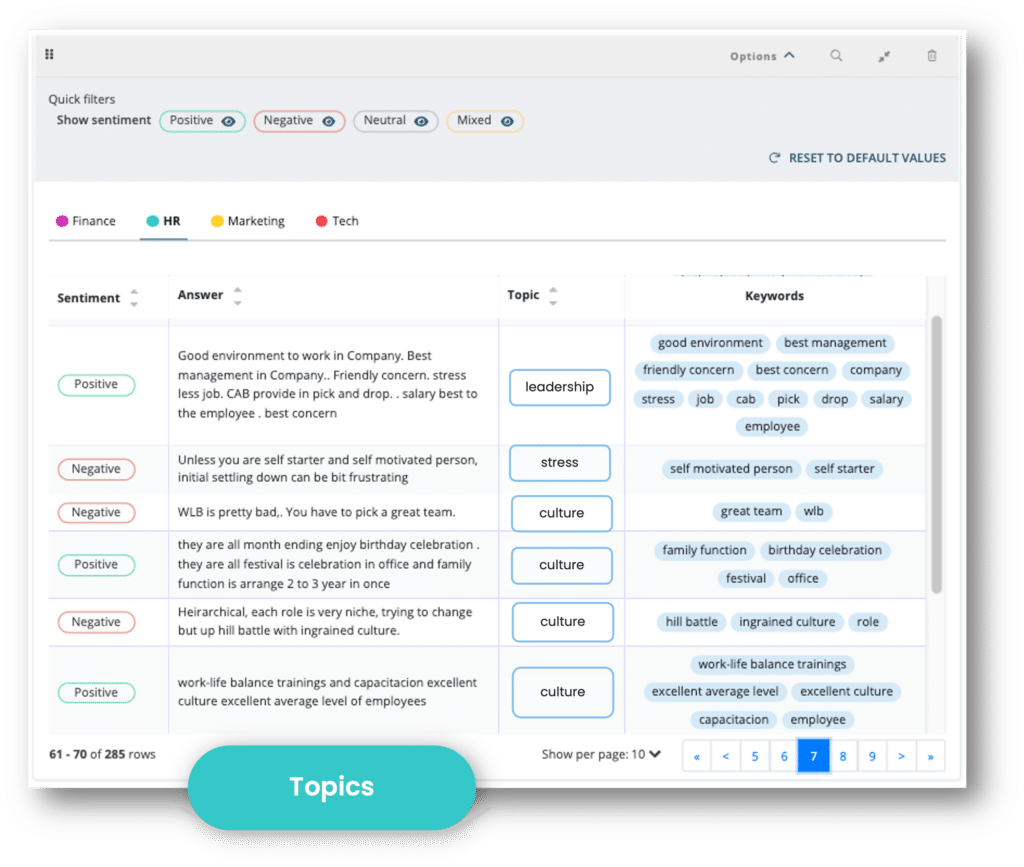
One of the core components of Netigate’s text analysis software is Topics. This allows you to define categories or themes for Text Analysis to sort open-text answers into. For example, you might define topics such as ‘leadership’, ‘culture’, ‘development’, ‘stress’, and ‘salary’ as focus areas for an employee survey. When combined with sentiment analysis, you can get a snapshot of the overall satisfaction or dissatisfaction of staff towards core topics.
Note that topics is different to keywords in that you are defining the focus areas yourself. This makes it useful if you already know what areas or themes you want to focus on. Keywords, on the other hand, can be a good starting point if you don’t!
So there you have it: some of the ways that you can use sentiment analysis to get the most out of your customer and employee feedback. If you’ve been inspired and want to try it for yourself, you can book a no-strings-attached demo with us here. We can give you a live demonstration of how it all works and get you set up in no time!
-
Natasha Ellis-Knight
-
Natasha Ellis-Knight
- 6 min read
- .






